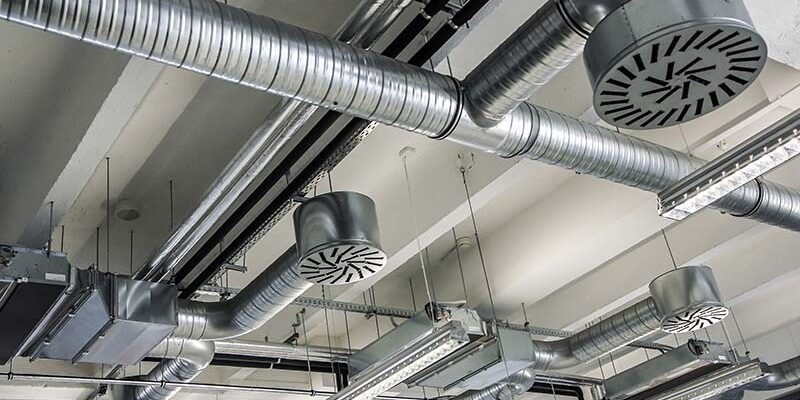The Remediation of Urine

Urine is a solution of metabolic wastes and certain other, often toxic, substances that the excretory organs withdraw from the circulatory fluids and expel from the body.
The composition of urine tends to mirror the water needs of the organism.
Terrestrial animals, depending on their habitat, usually retain water and secrete highly concentrated urine. Thus cats, dogs or other common mammalian pets tend to produce small amounts of highly concentrated urine. Also, cats with lower urinary tract disease tend to urinate more frequently and thus tend to hold less than the usual amount of urine in their bladder.
Urine can also contain sometimes-colored substances from drug therapy or vitamins when used in excess. Pet food dyes can also be a part of the colored evidence of pet urination spots.
Part of the problem with urine is in understanding the habits of the animals of the home where the urine problem exists. For instance, cats do not always make a “spot” in the corner or against the leg of a chair. Find all of the problem areas before attacking the “problem”.
Urine is extracted from the blood by the kidneys, stored in the bladder and discharged by the urethra. In healthy individuals it has a yellow coloration. A variety of biological substances create stain and odor removal challenges.
Although the resulting urine contamination factors vary from one type of organism to another, certain generalizations are possible. For example, most bacteria, plants and fish excrete ammonia, whereas most invertebrates excrete uric acid.
In most mammals, including humans, the primary product is urea, due to the enzymes in the urea cycle. In mammals, these enzymes are localized in the liver.
From the liver, the urea is passed to the circulating blood, which is eventually dialyzed in the kidneys, resulting in loss of urea to the urine.
The interesting tie-in here is that the urea from higher organisms” urine is transformed to ammonia by a number of common indoor environmental bacteria.
Odor
Normal urine has a characteristic odor, which varies between species and sex.
For example, the odor of urine from non-castrated male cats is strong and unmistakably characteristic. In man, abnormal urine odors in newborn infants are sometimes associated with metabolic defects and urinary tract infections. An ammoniacal odor is a common abnormality of urine.
Free ammonia imparts characteristic odor, while the ammonium salts and urea are odorless.
People or animals with diabetes usually have urine with a “fruity” acetone smell.
Fresh normal urine at room temperature does not have an ammoniacal odor because it contains an insignificant quantity of free ammonia. It contains large quantities of urea, however, and may contain a large quantity of ammonium salts.
The potential causes of ammoniacal odor include urea, which has been degraded to ammonia by the enzyme (urease) producing bacteria. Urease producing bacteria may be pathogens or contaminants. Freshly voided urine with an ammoniacal odor suggests (but does not prove) infection of the urinary tract with urease producing bacteria.
A putrid odor indicates bacterial degradation of large quantities of protein. Ketonuria has been reported to impart a characteristic odor to urine. Many individuals are unable to detect this odor.
Again, these bacterial transformations that can occur in the body can also occur in the carpet, in the grout, in the wood, or anywhere that the urine, environmental bacteria and water occur.
Color
Normal urine is typically transparent light yellow, yellow or amber.
Primarily, two pigments impart the yellow coloration. One is urochrome, which is a sulfur-containing oxidation product of the colorless urochromogen. Urochromogen is oxidized to urochrome, following exposure to air. The second pigment that gives color is urobilin, which is a degradation product of hemoglobin (a component of blood).
Urine pH
The kidneys are capable of adjusting the pH of urine between 4.5 and approximately 8.5, depending on the acid-base status of the body. Therefore, the pH of urine provides a metabolic state of the body.
The pH of dog and cat urine commonly lies between 5.5 and 7.0. In a study of 649 cats at the University of Minnesota, the mean urine pH was 6.6 (range 5.0 to 9.0).
Ingestion of animal protein diets typically result in production of acid urine. Ingestion of diets primarily composed of vegetables and cereals result in production of alkaline urine.
Urine pH tends to vary through the day, in part because of events associated with eating and digestion. Urine of dogs and cats tends to become less acidic shortly before ingestion of food. This is related to the “alkaline tide,” and presumably due to the secretion of hydrochloric acid in the stomach. For the same reason, the urine pH during the night is considerably higher.
It is logical to assume that the magnitude of change in urine pH following eating will be dependent on the composition of the diet, the frequency of eating and the quantity of food consumed.
In man, the pH of urine following sleep of several hours tends to be more acidic, presumably a reflection of respiratory acidosis associated with decreased ventilation during sleep.
Bacteria
Normally, urine is sterile until it reaches the mid-urethra. The urethra of dogs, and presumably cats, contains a resident population of bacteria, which are greatest in number at the distal end of the urethra.
Most of the organisms are Gram positive, but Gram negative bacteria and mycoplasms are also present. In a study published in the Journal of American Veterinary Association the following bacteria were found in the urine of clinically normal cats: Escherichia coli (E. coli), Staphylococcus spp, Streptococcus spp, Cornebacterium spp, Pasteurella spp and Flavobacterium spp.
In human beings, the urine is normally sterile; however, bacteria can inhabit the terminal third of the urethra and the vagina. Bacteria and yeast forms may be found in the sediment in small numbers in freshly voided urine.
In people with serious urinary tract infections, microorganisms are present in urine in considerably large numbers. Since urine in the urinary bladder is normally sterile, detection of any bacteria is indicative of infection.
Most bacteria grow best in the temperature range of 50-105 degrees Fahrenheit and in neutral to somewhat alkaline pH. Acidification retards the growth of bacteria (by contrast, mold and yeast thrive in more acid environment). Large numbers of bacteria can cause malodors.
In order to consume food, bacteria produce enzymes, which break the larger particles of their food into small units, and at some point the urine can smell bad as the urine ingredients are degraded and released as putrid gases.
Treatment
Before taking on a deodorizing job, it is important to keep in mind that the cost of odor control should not exceed the cost of replacement of the textile.
It is imperative to remove the source (that means keeping the pet away) from the urine contaminated area.
The problem with urine on textiles, especially carpet, is twofold:
- If the urine is allowed to sit, it will develop a putrid odor from microbial action or natural oxidation, and especially on areas where it has been repeated voided.
- The staining due to the coloring pigments present naturally in urine or from the bacterial or fungal growth associated with these areas.
Stains
One pigment that gives coloration to urine, urochrome, is the oxidized form of a colorless urochromogen.
Chromogen, on treating with an oxidant, gives a yellow coloration.
To treat such a stain, the best approach is to use reducing agents (the opposite equivalent of oxidizing agents).
Likely, heat may be required in conjunction with a reducing agent, as in the heat transfer method.
Deodorization
Urea is an excellent culture medium in which microorganisms grow with great rapidity. The bacteria can either be cocci or bacilli.
One of the changes that occur when urine is allowed to remain at room temperature is a variable increase in pH secondary to proliferation of urease producing bacterial contaminants and escape of carbon dioxide from urine.
Acidifying the affected area will slow down the action of bacteria and help dissolution of the urine salts.
The real dose of a wide variety of bacteria comes from the environment into which the urine is deposited. Skin scales, old urine deposits, dirt and other organic and inorganic materials in indoor environments are teeming with all kinds of bacteria.
Your weapons are cleaning with a slightly acidic cleaner and very good deep extraction, bacterial microorganisms, germicides, durable antimicrobial treatments and the transient fragrance deodorizers.
No one of these is magic, and how you identify the problem areas and use these tools will prompt either success or failure. Equally important is to try to understand your customer”s expectations.
If urine on the textile, such as carpet, is promptly tended to by spray extracting, the problems associated with odor and staining will not occur. However, in real life situations, this is not the case, since pets tend to pick a spot and frequent that area repeatedly.
Continuously voided urine over the same area of the carpet will impregnate not only the backing but also the carpet fibers and could also damage the sub-flooring, especially if it was wood, unsealed concrete or similar material, and may make it difficult to deodorize.
Pets may also void all over the area and the odor goes unnoticed and the voided urine “just sits there”.
Some pet owners may not notice the odor problem, as their sense of smell becomes desensitized. If the pet is removed from the area and the urine dries, the smell may not be discernible. But in such situations, the odor can come back after the carpet becomes wet, for instance, from cleaning. Humidity can also increase odors.
One method of treating is based on the fact that when urine is preserved with antibacterial agents like formaldehyde or thymol, it will not develop odor.
First, it is best to flush and remove as much urine as practically possible. Then acidification before application of germicide is helpful as it retards bacterial action.
The contaminated area is then treated with an appropriate germicide containing a suitable perfume. The germicides can be oxidizers, iodophors, phenolics, quaternaries (quats).
Some germicides work better than others. The germicide must be compatible with area to be treated. The germicide kills the odor-causing bacteria and the perfume acts as a masking agent.
Depending on how badly the area is contaminated by the urine, the padding and backing of carpet must be treated by direct application or needle injection, and a second or third application may be necessary.
Use of the durable chemically reactive silane quaternary ammonium treatment provides longer-term control of offending bacteria, yeast or fungus.
Another approach is based on the natural decomposition of urine in soil, where naturally occurring bacteria is able to degrade the urine.
This is done by seeding and inoculating the area with non-pathogenic bacterial cultures (incorrectly called enzymes). The logic being that the introduced bacteria will rapidly consume the food source in urine and hence consume the source of odors.
In such cases, the area must be kept moist and warm for 24-48 hours for this approach to be affective, and maintained within a narrow pH range. The success of deodorization will depend on holding these conditions, which are conditions difficult to sustain on carpet in the field. These are the same conditions that promote mold growth. For low levels of urine contamination, this approach can conceivably work, but for heavy contamination the abatement of odor will be difficult.
Aziz Ullah, Ph.D., MBA, is president of Fabpro Manufacturing, a leading formulator of carpet and upholstery cleaning products. He is a member of the American Chemical Society, senior member of the American Association of Textile Chemists and Colorists, and a member of The Textile Institute (UK). He can be reached at www.fabpro.com.












